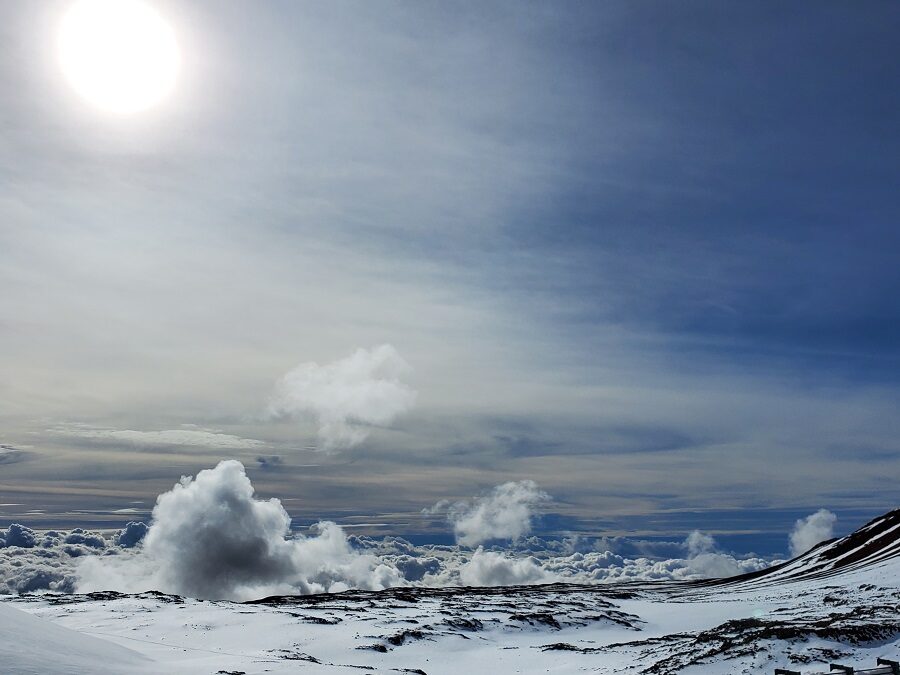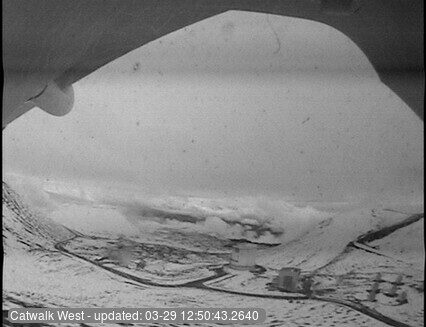
According to the National Weather Service, an upper level trough over the Hawaiian Islands will produce layered middle and upper level clouds over the highest summits of the Big Island through the afternoon. These clouds will produce periods of snow, freezing drizzle, and freezing fog; additional snowfall of 1-2″ is expected this afternoon. Winds will also be stiff: winds could gust up to 60 mph, making travel on icy roads even more hazardous.

Due to the wintry and windy weather, the access road to the summit of Mauna Kea is closed to the public at the Visitor Information Station at an elevation of 9,200 feet. Snow and icy conditions with fog, high humidity, and freezing temperatures are responsible for the closure. The road is closed whenever there is any ice or snow on the road, winds greater than 55 mph for one hour and/or gusts greater than 65 mph, visibility less than 50 feet, or any other condition that makes the road unsafe for travel.
Earlier this year, the Big Island saw a significant snowstorm that produced 1-2 feet of snow. That large 2021 snowstorm brought out snowboarders and skiers to try out the tropical snow on the slopes of Mauna Kea.



Reader Comments
to our Newsletter